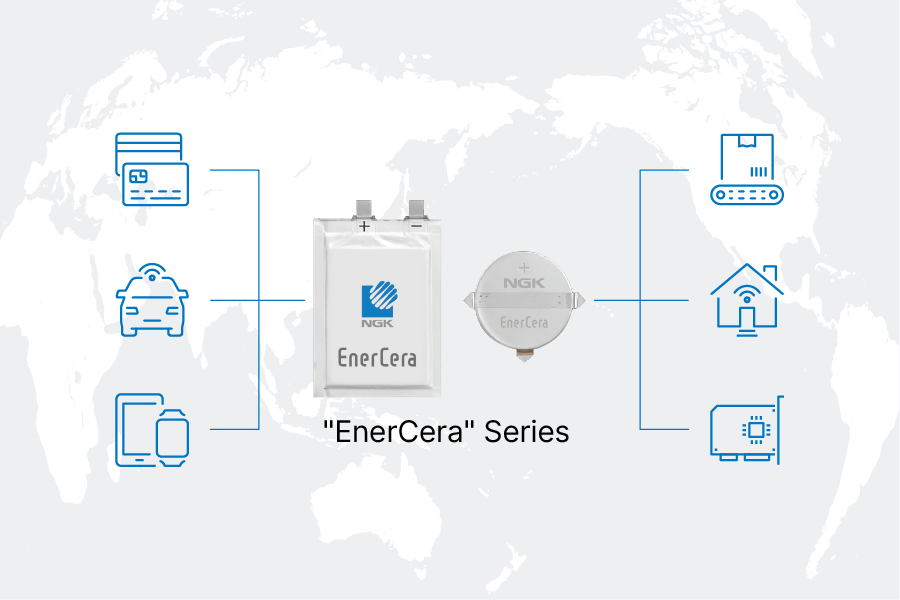industrial sensor manufacturerDevelopment division
Using Miniature Wearable Sensors to Monitor the Physical Condition of Construction WorkersAn IoT solution to improve safety at construction sites encountered a unique problem

Solutions
Miniature, Wearable Sensor Minimizes Burden on Workers
Solution Offered by EnerCera battery
Rechargeable and reusable, EnerCera battery can help reduce the cost of replacing and disposing of batteries.
The EnerCera cells can also be combined with various other power solutions, such as dye sensitized solar cells, and incorporated into Qi, and other wireless recharging reference designs, as desired.
Able to supply tens of milliwatts, enough for wireless communications, EnerCera battery enables real-time data collection in addition to BLE (Bluetooth Low Energy) and Wi-Fi based position tracking.
An Ultra-Compact Lithium-Ion Rechargeable Battery that Makes the Ultimate Wearable Sensor a Reality
A member of the development team who was gathering information came across information on several applications that combined NGK’s EnerCera super compact lithium-ion rechargeable battery with energy harvesting technology. Feeling that at a mere 0.45 mm thick, the battery would not only solve their problems, but make the wearable sensors less intrusive, they contacted NGK immediately. It was agreed that NGK would send them a sample.
Solving Battery Replacement and Capacity Problems in One Hit
Upon receiving the sample EnerCera battery, the development team, under the guidance of NGK, built and evaluated a prototype wearable sensor. The EnerCera prototype passed its tests with flying colors. The fact that it could be used over and over again would mean savings on battery replacement and disposal costs. It also allowed a variety of power options, due to its ability to be combined with dye sensitized solar cells, Qi, and other wireless charging reference designs. NGK provided the development team with comprehensive technical support on such topics as methods for connecting EnerCera cells in parallel, which was an issue when building the extended-use version of the sensor that the team was developing concurrently.
The EnerCera battery enabled even the minuscule microwatt power yielded by energy harvesting and wireless power transfer to be stored, while at the same time outputting significantly larger power in the order of tens of milliwatts, sufficient for BLE, Wi-Fi, and other wireless communication protocols. In on-site prototype testing, the device performed wireless communication without problems, and successfully collected data in real-time, which had been a hurdle. This result meant the team at last had good prospects for developing flexible devices that could fit the curvature of a helmet, and other items of ultra-light and unobtrusive workwear. They also anticipate using EnerCera in a BLE or Wi-Fi-based position tracking feature currently under development. Furthermore, the team found that because EnerCera Coin can be embedded into resins using extrusion molding, it can be applied to applications that need to be completely waterproof. The development team working on a fully waterproof version of the wearable sensor.


